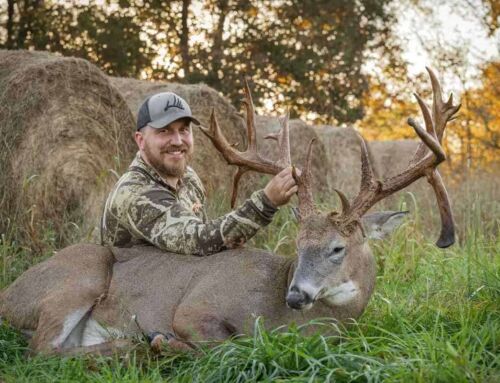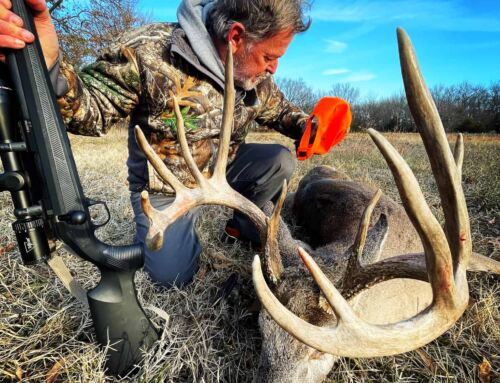One: Design Before You Dig
On an aerial map, look for strips and pockets of open ground toward the interior of your property, and plant those first. This keeps your plots—and the bucks they attract–away from roads and the neighbors’ fence lines.
Also, the closer you plant to thick bedding cover the better your chances that mature 8- or 10-pointer will pop out into the plot to grab a bite one evening this fall.
Think back to past hunts on the land. Whitetails are habitual animals that come and go in the same places from year to year. Where have you seen the most deer and found the found the most trails, rubs and scrapes over the years? Plant your plots in and around areas of established deer traffic.
Two: GPS Your Plots
“Use a GPS receiver to measure the exact area of every food plot,” says Bill Gray, an Alabama wildlife biologist. “Knowing the precise acreage of your plots will prevent over applying seed, fertilizer, lime and herbicide. Better crops are always produced when the correct amount of seed, fertilizer and lime are applied.”
Three: Plant North to South
“Configure plots to run more north-south than east-west,” says Dr. Grant Woods, one of the top deer managers in the world. “Growing plants will get adequate sunlight each day, but they won’t bake in the summer. The northeast corner of a slope generally has the moistest soil and is a particularly good spot for a plot.”
Four: Get A Top Soil Sample
Dig 5 or 6 six cups of dirt from various spots around a plot area, mix the soil in a bucket and come up with one representative soil sample. Have it tested at your county extension office or by a seed company for recommendations on liming and fertilizing. Bonus tip: Ideally your dirt would have a pH level of seven, or neutral. But usually it’ll test 4 to 6. Keep in mind that it takes a ton of lime per acre to raise the pH one point, and it takes lime months to work most efficiently. Plan well ahead of time.
Five: Plant Clover
You have a bunch of seed choices, but you can’t go wrong by planting a 60/40 mix of a perennial like Imperial Whitetail Clover and chicory in spring. By mid-May the clover is producing major tonnage, and the chicory kicks in soon thereafter to provide a steady food source for lactating does and bucks putting on new antlers.
The great news is that the clover will last 5 years, and the chicory about 3 years, so this minimizes your work and cost big time.







Thanks Hanback. Good points for plots. Just wanted to throw in that it’s best to use plastic buckets, over metal ones (and plastic mini-shovels, too). It’s said that rusty old metal buckets might “contaminate” a soil sample. I’m no scientist, but it’s most likely best to use plastic, regardless. If we can get past Winter here, the food plotting will begin in earnest.
The area I hunt and plant food plots in is a far cry from the manicured grounds some hunting clubs plant each year. Mine are small clearings, log skidder roads and such. On them I plant oats and clover with some rye grain mixed in. Planted in mid August, with the hopes that some clover will be present from spring into late summer.
All three produce their own nitrogen also as an added bonus your local ag store sells the seed at 1/3 the cost of pre bagged seeds you find in sporting goods stores.
Oats and rye will grow almost anywhere clover needs a bit more neutral PH but of course the more prep work you do the better the crop.
Do not fall victim to the “no till ” scams that consist o 60-90% rye GRASS. Deer will not eat rye grass unless there is next to no other food source in the area. Also even rye grass seed need contact with the soil and fertilizer to grow.